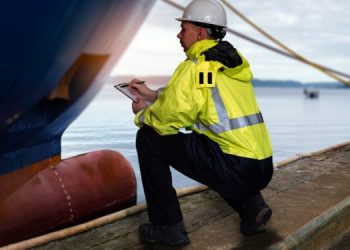The Port Authority is studying the possibilities of using an internal pipeline network to move CO₂ around for applications inside and outside the port.
A feasibility study is being carried out on behalf of Antwerp Port Authority to determine the possibilities of using an internal pipeline network to move CO₂ around the port for various applications inside and outside it. The study is being partly financed from EU subsidies as part of the Interreg project entitled “CO₂ and CH₄ as resources for regional development.”
The Interreg project looks at the availability of CO₂, the possibilities for CO₂ purification and transport, and CO₂ applications now and in the future. The port of Antwerp is responsible for nearly half of all industrial CO₂-equivalent emissions in Flanders, because among other things it is home to the largest integrated chemical and petrochemical cluster in Europe. On the other hand this means that the port has great potential for supplying CO₂ for use in various applications.
Creating added value from CO₂ in the port of Antwerp
CO₂ is a useful raw material and the basis for all life, but for some time now it has been at the centre of a wide-ranging debate in society at large. Due to the way in which our economy is organised at present, with sustainable use of raw materials being the exception rather than the rule, too much CO₂ is released into the atmosphere. As a result, raw materials are becoming depleted and the planet is slowly warming up.
CO₂ offers a number of interesting opportunities for the port of Antwerp:
- CO₂ can be supplied to greenhouse growers, along with heat which would otherwise go to waste. When combined with the use of electricity from sustainable sources this could enable a transition to a “climate neutral” horticultural sector.
- CO₂ can be made to react with slag from the steel industry in a process called carbonation to produce sustainable building materials.
- CO₂ can be combined with sustainably produced hydrogen in a process called power-to-gas to produce essential intermediate substances
(C1, C2 and C3 compounds) for the Antwerp oil and chemical cluster, thus helping to make the industry more sustainable. - “Enhanced Oil & Gas Recovery” (EO&GR) can contribute to more cost-effective production of oil and gas in Europe. This in turn can make us less dependent on crude oil imports and avoid having to develop new oil fields in environmentally or socially sensitive areas. This transition technology can also make geological storage of CO₂ profitable, as well as helping to refine technology for the capture, transport and injection of CO₂. Ultimately this could make carbon capture and storage (CCS) more cost-efficient even without EO&GR.
However, one of the obstacles in the way of such applications is the availability of CO₂. This may seem paradoxical, as total CO₂ emissions are more than enough to support all these new ideas. The difficulty is that the infrastructure for supplying CO₂ in the correct form is currently lacking.
Based on the results of the feasibility study, ways of further developing business cases for the above applications will be examined.
Source: Port of Antwerp
In the beginning, I was explicit with you propecia before and after has changed my being. It has become much more fun, and now I have to run. Just as it is improbable to sit.





























































